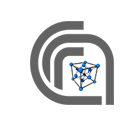IoT, Edge, FOG, wearables, and sensing in SWHARD's R&D projects
Dr. Alfonso Mantero, PhD
Founded in 2012, Swhard is a company specialized in providing complete research and development (R&D) solutions, covering all stages of the process, from hardware design to software interface development. Swhard's established expertise in various fields, including telecommunications, automotive, automation, biomedicine, simulation, and low-power systems, enables it to manage the entire product life cycle, from the preliminary study phase through prototyping and final development. A significant example is the Sentry project, a patented system for real-time motion detection, developed with the support of the MISE-funded Brevetti+ call. This project allowed Swhard to collaborate with the Department of Neuroscience, Rehabilitation, Ophthalmology, Genetics and Maternal and Child Sciences (DINOGMI) at the University of Genoa, optimizing the product through clinical feedback and field testing. Sentry is a prototype smart wearable device for postoperative rehabilitation that aims to improve the effectiveness of treatment by allowing observation of patient movement in the home or work environment and objective data on limb mobility during study sessions. The current prototype is intended for shoulder rehabilitation, but future developments include analysis of other body districts and posture analysis.
Swhard is involved in the PNRR project RAISE (Robotics and AI for Socio-economic Empowerment), the Liguria innovation ecosystem established to promote technological innovation in various sectors, including health, smart cities, environment and port areas. Under RAISE, Swhard participates in activities aimed at developing advanced technologies for personal and remote health care. These projects include the development of smart devices and telemedicine technologies, with the aim of improving patients' quality of life and optimizing care processes. In particular, one of the specific projects in which Swhard is involved involves the creation of a remote monitoring system for patients with chronic diseases, which uses advanced sensors and artificial intelligence algorithms to provide real-time data to physicians. This system enables continuous and accurate monitoring, reducing the need for frequent hospital visits and improving the management of patients' health conditions.
In addition, Swhard is involved in several innovative projects in various fields, such as:
- Athena: an ESA-funded project to optimize algorithms and develop a multilevel framework to simulate the biological effects of radiation in a space environment. This project aims to simulate a realistic space environment for satellites and space missions with a dedicated, multi-mission platform to simulate radiation effects at different scales, from DNA to the whole human body. The platform uses the latest theoretical approaches for simulating physical and chemical interactions, using robust and efficient software, from the very first physical interactions (less than a few picoseconds), to the first biological damage (more than minutes).
- LogOil: An IoT system for fuel tank load management. Our sophisticated software system constantly records, analyzes and reports all product parameters, received from high-end magnetostrictive probes in the tanks. Using algorithms that take into account all internal and external factors and variables, the system identifies and evaluates loads, discharges, and leaks from the tank layout with 99.8 percent accuracy. LogOil has been presented at several exhibitions and received awards, such as the “Zamma Award” at the NTT Data Open Innovation Contest 9.0.
- NeuroBoard: An AI hardware accelerator powered by 4608 neurons on eight neuromorphic chips (NM500 ASIC) and very fast FPGA neurons. The on-board CPU can run both emulated neurons and conventional SW to support AI. Designed to fit most embedded and server systems (supports M.2 and PCIe slots), NeuroBoard can also operate in standalone mode, connecting directly to sensors and networks.
- Biomed: Swhard supports the development of robotic prostheses and exoskeletons for upper and lower limbs, using platforms such as EtherCat for ADVR robotics.






